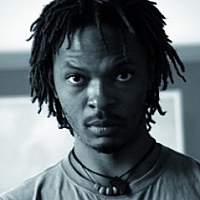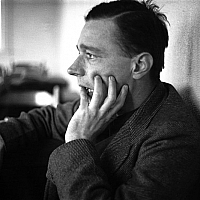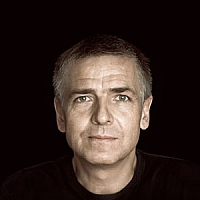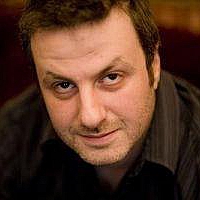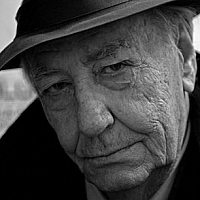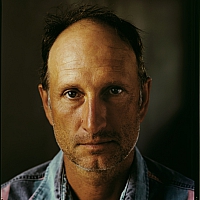
Fatou Kande Senghor, Giving Birth, 2014. Video, sound, color, 30’ loop. Courtesy the Waru Studio
The 56th International Art Exhibition will form a unitary itinerary that starts at the Central Pavilion (Giardini) and continues at the Arsenale, with over 136 artists from 53 countries, of whom 89 will be showing here for the first time.
After having explained in October the main topics of All the World’s Futures, Okwui Enwezor has explained one movens for his project as follows:
The ARENA
“In 1974 la Biennale di Venezia, following a major institutional restructuring and the revision of its rules and articles of constitution, launched an ambitious and unprecedented four-year plan of events and activities. Part of the programs of 1974 were dedicated to Chile, thus actively foregrounding a gesture of solidarity toward that country in the aftermath of the violent coup d’état, in which General Augusto Pinochet overthrew the government of Salvador Allende in 1973. Bringing practitioners across the fields of visual art, cinema, music, theater, dance, and performance, the events of the 1974 Art Biennale were spread across the entire city of Venice. Today, this remarkable and transformative episode in the history of the Biennale is largely forgotten.”
“The dedication of the program of events to Chile and against fascism remains one of the most explicit attempts, in recent memory, by which an exhibition of the stature of the Art Biennale not only responds to, but courageously steps forward to share the historical stage with the political and social contexts of its time. It goes without saying that, in view of the current turmoil around the world, that the Biennale’s Eventi del 1974 has been a curatorial inspiration.”
“In response to this remarkable episode and the rich documentation it generated, the 56th International Art Exhibition: All the World’s Futures, will introduce the ARENA, an active space dedicated to continuous live programming across disciplines and located within the Central Pavilion in the Giardini. The linchpin of this program will be the epic live reading of all three volumes of Karl Marx’s Das Kapital (Capital). Here, Das Kapital will serve as a kind of Oratorio that will be continuously read live, throughout the exhibition’s seven months’ duration.”
“Designed by award-winning Ghanaian/British architect David Adjaye, the ARENA will serve as a gathering-place of the spoken word, the art of the song, recitals, film projections, and a forum for public discussions. Taking the concept of the Sikh event, the Akhand Path (a recitation of the Sikh holy book read continuously over several days by a relay of readers), Das Kapital will be read as a dramatic text by trained actors, directed by artist and filmmaker Isaac Julien, during the entire duration of this year Art Biennale.”
“Carrying out the concept of “Liveness: On Epic Duration,” the Art Biennale has commissioned several new scores and artists’ performances, to be presented continuously in the ARENA. Here, we are especially interested in the concept of the song and the potential for the human voice to be an instrument that carries forward the pace of a narrative.”
“Olaf Nicolai is developing a new performance work that draws inspiration from Luigi Nono’s two-part composition Un volto, e del mare / Non consumiamo Marx (1968), an innovative piece for voice and magnetic tape, as well as the Italian composer’s later attempts to develop a critical and political statement by means of music, drawing inspiration for his lyrics from Cesare Pavese’s poems, from wall writings seen in the streets of Paris, and even found voices which he randomly recorded live during street demonstrations!
Joana Hadjithomas and Khalil Joreige will present a daily reading of their artist book Latent Images: Diary of a Photographer, the third part of their Wonder Beirut project. In addition to its text, this book includes thirty-eight photographic plates selected from among hundreds of reels of film exposed, but until now never developed, by the Lebanese photographer Abdallah Farah between 1997 and 2006.
Jason Moran’s STAGED will map and investigate the tempos of work songs sung in prisons, fields, and houses. In a sampling of songs that inmates sing while working in the Louisiana State Penitentiary at Angola, the tempos range from 57 to 190 beats per minute.
Jeremy Deller will explore the question of life and working conditions in factories, based on archival materials from the nineteenth century through the present.
Charles Gaines’s new original master composition for the Art Biennale is derived from his most recent body of work, Notes on Social Justice, a series of large-scale drawings of musical scores from songs, some borrowed from as early as the American Civil War (1860–1865) and others dating from the mid twentieth century.
Mathieu Kleyebe Abonnenc will present in the Art Biennale a temporary memorial to the music and personality of the legendary African American musician, singer, and composer Julius Eastman (1940–1990), whose singular and inimitable contribution to contemporary, avant-garde classical music will be on display in the ARENA throughout the Exhibition.
the TOMORROW will focus their attention on Das Kapital, not just as an abstract field of logical and economical devices, but rather as a potential repository of stories and figures. In the Art Biennale, the TOMORROW will attempt to imagine the characters and the figures that could make use of Marx’s toolbox in the contemporary context. Tales on Das Kapital is a search for non-modern subjects to play the Capital Drama. The TOMORROW will offer weekend seminars, during which the focus will turn to the narrative and epic dimension of Marx’s book.”
“The focus on live performances and actions will extend in the Central Pavilion beyond the ARENA and into the Biblioteca della Biennale, where Mounira Al Solh’s NOA (Not Only Arabic), a limited-edition periodical founded in 2008, will be made available for solo viewings that must be arranged by appointment. During the preview (May 6–8), also at the Biblioteca, Lili Reynaud-Dewar and her students will read a selection of texts from the mid 1990s to today—analysis, testimonies, manifestos—dealing with notions of intimacy, vulnerability, and promiscuity in the context of the AIDS epidemic.”
“Connecting the 56th Art Biennale’s two main venues, the Giardini and the Arsenale, Saâdane Afif’s performance piece The Laguna’s Tribute: A Corner Speaker in Venice will be staged at the corner of Via Garibaldi and the Grand Canal. Spectators there will see and hear a local Corner Speaker either read a text or sing the lyrics of songs composed by friends of the artist.”
“A number of performance works will also be presented in the Arsenale, beginning with a new project by Jennifer Allora and Guillermo Calzadilla, In the Midst of Things, in which a choral group will perform an arrangement of Joseph Haydn’s oratorio The Creation.”
“In the Corderie, Theaster Gates will activate his new multimedia installation Martyr Construction, a work addressing the question of the recurring dissolution and demolition of church parishes in African American and Hispanic neighborhoods across the United States.”


